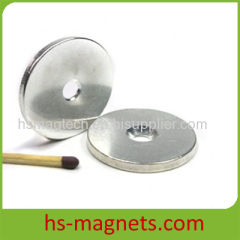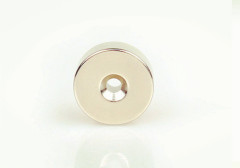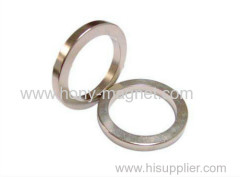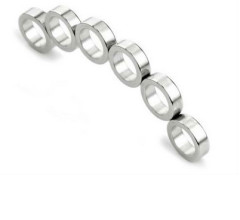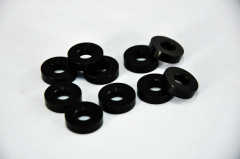.jpg)
Super segment Magnet ring
60.0~100.0 USD
| Min. Order: | 100 Piece/Pieces |
|---|---|
| Payment Terms: | T/T |
| Supply Ability: | about 100 tons per month |
| Place of Origin: | Zhejiang |
Company Profile
| Location: | Ningbo, Zhejiang, China (Mainland) |
|---|---|
| Business Type: | Manufacturer, Distributor/Wholesaler |
Product Detail
| Means of Transport: | by air or by sea |
|---|---|
| Application: | Motor Magnet |
| Shape: | Cup Shape |
| Type: | Permanent |
| Composite: | NdFeB Magnet |
| Brand Name: | Chinese Magnetic Solutions |
| Specification: | D128XD120X40mm |
| Function: | motor,speaker,holding |
| Patent Rights: | SSMC pentent license |
| Certificate: | ISO/TS 16949:2002 |
| Export Area: | US,Europe,Japan |
| Cooperative Company: | Arnold,Danaher,JBL.... |
| Production Capacity: | about 100 tons per month |
| Packing: | special package for magnets |
| Delivery Date: | 7-30 days |
Product Description
Sintered neodymium-iron-boron (NdFeB) magnets, also referred to as "neo" magnets, have been commercially available since November 1984. They offer the highest energy product of any material today and are available in a very wide range of shapes, sizes and grades. Earliest use of neo magnets was primarily for voice coil motors (VCM's) in hard disk drives and this market still accounts for about 55% of total sales dollars. Other applications include high performance motors, brushless DC motors, magnetic separation, magnetic resonance imaging, sensors and loudspeakers.
MAXIMUM USE TEMPERATURE AND CORROSION
The first materials produced achieved about half the theoretical maximum energy product of 64 MGOe (509 kJ/m3). Refinements over the past few years have allowed commercial supply of magnets close to 50 MGOe (398 kJ/m3). High temperature (>180) compositions have been developed with intrinsic coercivity greater than 25,000 oersteds (1990 kA/m). Higher temperature materials, however, tend to have lower maximum energy products.
Although the Curie temperature for NdFeB materials is 310 degrees for 0% cobalt-containing material to greater than 370 degrees for 5% cobalt-containing, some irreversible loss of output may be expected at even moderate temperatures. Neo magnets also have a moderately high Reversible Temperature Coefficient of Induction which reduces total magnetic output as temperature rises. Selection of neo magnets instead of SmCo, for example, is a function of the maximum temperature of the application, required magnetic output at typical use temperature and total cost of the system.
Neo magnets also have some limitations due to their corrosion behavior. In humid applications, a protective coating is highly recommended. Coatings which have been used successfully include, E-coat (a liquid dip epoxy coating), dry electrostatic spray epoxy, nickel plating and combinations of these coatings. Changes in composition and processing over the past several years have resulted in significant improvements in corrosion resistance and high temperature performance.
Most of the rare earth elements (neodymium, dysprosium, samarium, etc.) absorb hydrogen into the structure resulting in expansion and cracking of the material which is referred to as decrepitation. Therefore, neo magnets are not recommended where exposure to hydrogen is likely.
MANUFACTURING
Neo magnets are typically produced via a powder metallurgy process wherein the alloy composition is melted from raw materials, crushed into a coarse powder, finely milled, compaction pressed, sintered and finish processed.
MAXIMUM USE TEMPERATURE AND CORROSION
The first materials produced achieved about half the theoretical maximum energy product of 64 MGOe (509 kJ/m3). Refinements over the past few years have allowed commercial supply of magnets close to 50 MGOe (398 kJ/m3). High temperature (>180) compositions have been developed with intrinsic coercivity greater than 25,000 oersteds (1990 kA/m). Higher temperature materials, however, tend to have lower maximum energy products.
Although the Curie temperature for NdFeB materials is 310 degrees for 0% cobalt-containing material to greater than 370 degrees for 5% cobalt-containing, some irreversible loss of output may be expected at even moderate temperatures. Neo magnets also have a moderately high Reversible Temperature Coefficient of Induction which reduces total magnetic output as temperature rises. Selection of neo magnets instead of SmCo, for example, is a function of the maximum temperature of the application, required magnetic output at typical use temperature and total cost of the system.
Neo magnets also have some limitations due to their corrosion behavior. In humid applications, a protective coating is highly recommended. Coatings which have been used successfully include, E-coat (a liquid dip epoxy coating), dry electrostatic spray epoxy, nickel plating and combinations of these coatings. Changes in composition and processing over the past several years have resulted in significant improvements in corrosion resistance and high temperature performance.
Most of the rare earth elements (neodymium, dysprosium, samarium, etc.) absorb hydrogen into the structure resulting in expansion and cracking of the material which is referred to as decrepitation. Therefore, neo magnets are not recommended where exposure to hydrogen is likely.
MANUFACTURING
Neo magnets are typically produced via a powder metallurgy process wherein the alloy composition is melted from raw materials, crushed into a coarse powder, finely milled, compaction pressed, sintered and finish processed.



